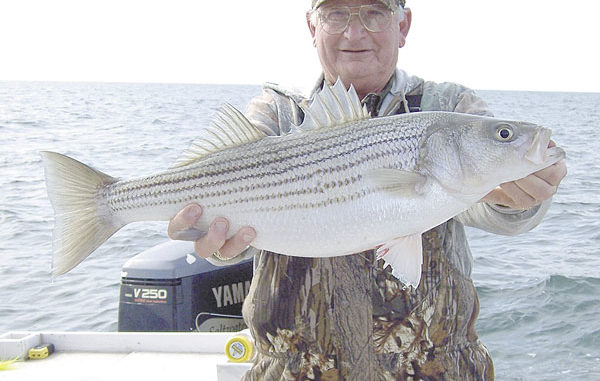
Winter migrations of striped bass can make for some of the best coastal fishing of the season, both inshore and offshore.
For the past five years, North Carolina fishermen have wondered if this could be the season when everything falls into place, when the striper fishing that marked the winter of 2004-2005 makes a repeat visit.
That was the year when the Hudson and the Delaware rivers and the Chesapeake Bay became too cold for striped bass and the forage upon which they fed, and a steady stream of cattle — cow stripers in the 30- to 40-pound range — fled southward along the beaches of the Outer Banks and the coastal waters were loaded with big fish.
Mike Lundy of Pro Motion Guide Service remembers that year, when hefty striped bass seemed to be everywhere you looked, but he also said the years since haven’t been a bust if you understand the factors that influence the movement of stripers. Unfortunately, one of those factors is whether or not stripers migrate through state-governed waters (from the beach to three miles offshore) or the area from three to 200 miles offshore, the “Exclusive Economic Zone” or EEZ, which is governed by federal regulations and has been closed to all striper fishing since 1988 as part of the Striped Bass Conservation Act of 1984.
“Last year, we got so cold, so fast, that the fish came out of the Chesapeake Bay area and went straight out to about 20 miles offshore before heading south,” said Lundy. “The bluefin tuna guys reported seeing them schooling way out, and when they get outside that 3-mile barrier, you can’t attempt to fish for them.”
Lundy and many coastal anglers are hoping for better fishing this year, which ideally would entail a gradual cool-down in the Chesapeake Bay, with colder waters remaining offshore. Lundy said that even in off-years, some fish will work their way down the beaches and usually end up in the surf off Cape Lookout at Morehead City. The biggest factor influencing their movement, in his opinion, is where the baitfish migrate.
“Their main diet is menhaden, but they’ll eat croaker, mullet, eels or anything else that runs along the beach,” said Lundy.
When stripers were present in state-governed waters off the Outer Banks, Lundy and many other fishermen have been making regular runs north out of Oregon Inlet, trying to intercept them on their southward migration. The best way to local stripers, he said, is to look for any signs of life working in the ocean, particularly birds, feeding on schools of bait. The localized area may be alive with whales, dolphins and other pelagic fish, but the best indicator for Lundy is to see a flock of diving gannets, which are often visible from several miles away.
Since 2005, however, Lundy has taken a different approach, trailering his 22-foot center console to Virginia Beach and working his way south.
“In early December, we’ll be looking for stripers coming directly out of Chesapeake Bay up in Virginia,” he said. “When it gets cooler later in the month, we work our way south, last year, we had some pretty good days right off of Corolla.”
Lundy trolls for striped bass with a spread of five rods, towing hardware. He runs 40-pound-class baitcasting combos on each corner of his boat, pulling deep-diving crankbaits such as a Mann’s Stretch 25 or 30. He’s also a fan of the standard bucktail jig and will put two of these, one long and one short — combined with a worm trailer — on each side of the boat. His fifth rod is baited with a Mojo rig that may weigh as much as 12 ounces and runs straight off the rear of the boat.
“We also use some 12-inch swimbaits, but whatever you use, you want to make sure you space your rods evenly so they don’t tangle when you go to make a turn. That’s one reason I like the Mojo; it’s like dragging a downrigger ball with hair, but it’ll catch fish, and it stays down deep.”
Weather plays a critical roll in December striper fishing.
“Ideal is a west or northwest wind that’s blowing off the beach,” Lundy said. “That’s a pretty calm day. Same goes for a south or southwest wind, depending on where you are, because the beach angles out from Corolla to down below Oregon Inlet. A north wind gets rough, and anything hard from the east will keep you inside, especially in a smaller boat.”
As finicky as the weather and stripers can be, Lundy also has the option of shifting gears and targeting inshore stripers with light tackle.
“There’s a lot of striped bass to be found around Albemarle and Pamlico Sounds,” he said. “On average, these fish don’t get as big as what we catch off the beach, but it’s pretty common to get on some 22- to 24-inch fish, and we’ve caught some that were bigger.
“These seem to be more or less resident fish, meaning that they don’t mix in very often with the Atlantic-run fish. These are the same fish that go up the Roanoke River to Weldon on their spring spawning runs.”
Lundy’s tactics for targeting inshore winter striped bass is simple. He likes bridges. Some of his favorite bridges include the US 17 bridge at New Bern over the Neuse River, the US 64 bridges to and from the mainland to Manteo, and the US 17 bridge over the Tar-Pamlico near Washington. Other good places include the US 17 bridge over the Chowan near the mouth of the Roanoke, and Herbert C. Bonner Bridge that carries NC 12 over Oregon Inlet. These bridges span the four corners of the inshore waters of Pamlico and Albermarle Sounds, but Lundy fishes all of them in pretty much the same way.
His inshore gameplan is to target specific structure and either cast artificial baits or anchor and put dead bait on the bottom. He doesn’t care to troll when he’s inshore.
“We almost always find fish holding in eddies behind the bridge pilings,” he said. “I’ll cast a bucktail jig or an artificial eel rig and let it bump right along the bottom at the base of the pilings. On occasion, we’ll drop chunker crabs, half a blue crab, straight down and let it lay on the bottom.”
Lundy said inshore fish will also school if they can round up baitfish near the surface, so he keeps his eye peeled for wheeling birds just like he does when fishing offshore.
“I’d rather fish offshore, but the inshore bite can save the day if you try to run offshore and the wind blows you out.”

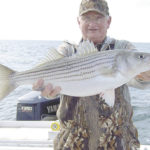
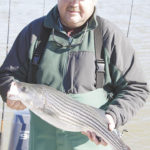
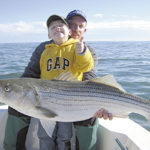
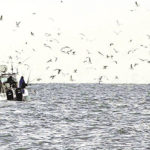
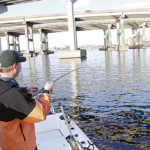
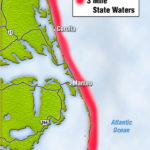
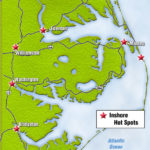



Be the first to comment